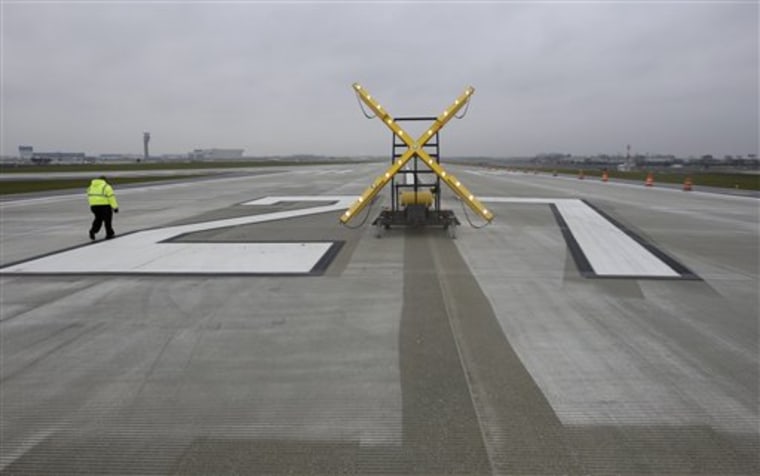Planes began taking off from new multimillion-dollar runways at three U.S. airports on Thursday with aviation officials heralding the increased capacity as crucial to reducing delays, even in the face of a slumping economy and a projected decline in domestic flights this winter.
More than $450 million was spent on the runway at Chicago’s O’Hare International; approximately $350 million went into the runway at Dulles International, just outside Washington, D.C.; and more than $1 billion went toward Seattle-Tacoma International’s new strip.
“Aviation has always been a growing industry,” said acting Federal Aviation Administration Director Robert Sturgell, who traveled to all of the opening ceremonies with Transportation Secretary Mary Peters. “We’re building for the future.”
O’Hare inaugurated the vital global hub’s first new runway in nearly 40 years when a plane carrying Mayor Richard Daley and other officials touched down Thursday on the stark white concrete.
“This is a historic day for Chicago, Illinois, and the country,” Daley said as snow fell around him. The new runway enhances Chicago’s “position as the aviation city in the world, in the United States.”
The runway is part of a planned $15 billion expansion at O’Hare, which envisions another new runway and terminal by 2014. But the airport hasn’t secured funding for that second phase, and six of the airport’s carriers are balking at the cost in light of economic woes.
At Dulles, an American Airlines flight bound for Los Angeles took off, kicking up a small cloud of dust and opening the airport’s first new runway since it opened in 1962.
But air traffic controllers noted taxiways needed to make Dulles’ new runway fully functional aren’t slated for completion until summer, meaning the runway’s practical benefit will be minimal and dampened by a confusing two-mile taxi route to and from the strip.
The airstrip at Seattle-Tacoma opened Thursday evening. Detractors have criticized its billion-dollar price tag, which is five times initial estimates. Defenders say it will more than pay for itself in decades to come, including by reducing delays.
David Castelveter, a spokesman for the Air Transport Association, which represents U.S. carriers, called the construction work a positive step but said more needs to be done.
“The greater challenge will be to do something about modernizing air space so that those improvements in efficiency on the ground is matched in the air,” Castelveter said.
The association backs a Federal Aviation Administration push for a new satellite-based network that would let planes fly using GPS instead of radar. Funding and implementation issues have hampered the $30 billion project.
Meanwhile, nationwide bottlenecks, particularly around chronically clogged New York City-area airports, will continue hampering delay-reduction efforts, Castelveter predicted.
The FAA acknowledges that new runways aren’t the sole answer to solving delays, noting in a 2007 report that just two major U.S. airports have opened in the past 40 years — Dallas-Fort Worth and Denver International — and that as many as four need to be built in the next two to three decades.
Chronically cramped LaGuardia Airport in New York may get a new central terminal as the Port Authority of New York and New Jersey pushes for a replacement. The agency, which operates the airport, authorized a $40 million study Thursday that should result in a new design for the 45-year-old terminal.
Despite current downturns — data show domestic flights fell 6 percent in August — air travel is still expected to rise from the approximately 700 million air travelers in 2007 to more than 1 billion annually during the next decade.
